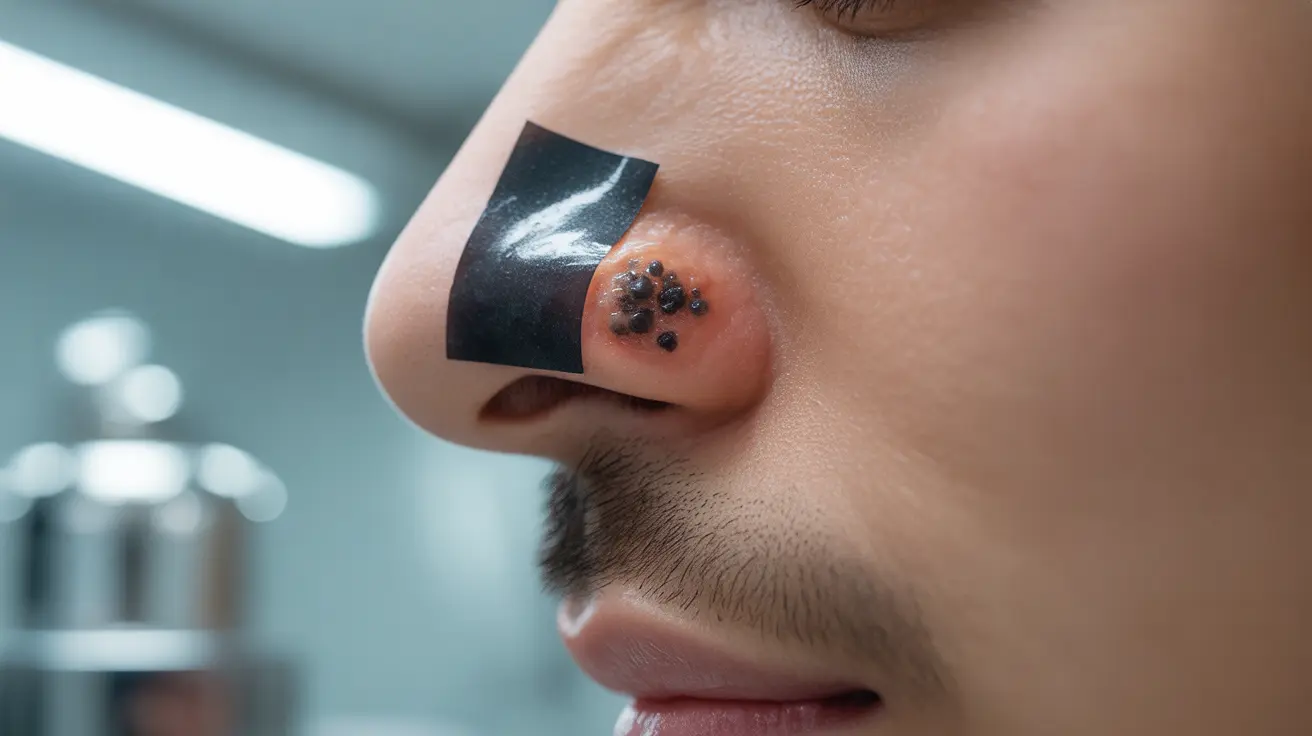For many people struggling with blackheads and clogged pores, nose strips have become a popular quick-fix solution. These adhesive strips promise to extract stubborn blackheads and remove excess oil from the nose area, but understanding how they work and their limitations is crucial for safe and effective use.
Whether you're considering trying nose strips for the first time or wondering about their long-term effects, this comprehensive guide will explore their mechanism of action, safety considerations, and alternative solutions for managing blackheads.
How Nose Strips Work
Nose strips utilize a strong adhesive that bonds to the surface layer of the skin when activated by water. As the strip dries, it creates a stiff bond that adheres to dead skin cells, oil, and other debris lodged in your pores. When you remove the strip, it pulls out these materials, potentially including blackheads.
The adhesive technology in nose strips is similar to that used in strong bandages, specifically designed to grip onto pore contents without causing excessive damage to the surrounding skin.
Safety Considerations for Different Skin Types
Sensitive Skin
People with sensitive skin should approach nose strips with caution. The strong adhesive can cause irritation, redness, and even mild skin damage. It's recommended to test the product on a small area first and limit use to once or twice per week maximum.
Acne-Prone Skin
Those with active acne should be particularly careful with nose strips. The pulling action could potentially spread bacteria and irritate existing breakouts. Additionally, the adhesive might aggravate inflammation and trigger new breakouts in susceptible individuals.
Potential Risks and Side Effects
Regular use of nose strips can lead to several potential complications:
- Skin irritation and redness
- Temporary inflammation
- Broken capillaries
- Removal of natural oils
- Skin sensitivity
- Enlarged pores due to repeated trauma
Understanding Pore Size and Nose Strips
Despite popular belief, nose strips cannot permanently shrink pore size. Pores are natural structures in your skin that don't actually open and close. While nose strips may temporarily make pores appear smaller by removing debris, they cannot alter your natural pore size, which is largely determined by genetics and age.
Effective Alternatives for Blackhead Management
Several proven alternatives can help manage blackheads and unclog pores:
Chemical Exfoliants
Products containing salicylic acid or beta-hydroxy acids (BHAs) can effectively dissolve excess oil and remove dead skin cells that contribute to blackheads.
Clay Masks
Natural clay masks can help draw out impurities and absorb excess oil without the harsh pulling action of nose strips.
Regular Cleansing
A consistent cleansing routine using non-comedogenic products can prevent blackhead formation and maintain clear pores over time.
Frequently Asked Questions
How do nose strips work to remove blackheads and clean pores? Nose strips use a strong adhesive that, when moistened and dried, bonds to the contents of your pores. Upon removal, the strip pulls out accumulated oil, dead skin cells, and blackheads from the pores.
Are nose strips safe to use on sensitive or acne-prone skin? While generally safe for normal skin, nose strips can be too harsh for sensitive or acne-prone skin. They may cause irritation, redness, or worsen existing acne. Those with sensitive skin should consider gentler alternatives.
What are the potential side effects or risks of using nose strips regularly? Regular use of nose strips can lead to skin irritation, broken capillaries, excessive dryness, and potential damage to the skin barrier. They may also remove beneficial natural oils along with the unwanted debris.
Can nose strips permanently shrink or reduce the size of pores? No, nose strips cannot permanently shrink or reduce pore size. While they may temporarily make pores appear smaller by removing debris, pore size is determined by genetics and cannot be permanently altered through topical treatments.
What are effective alternatives to nose strips for managing blackheads and unclogging pores? Effective alternatives include chemical exfoliants containing salicylic acid, clay masks, regular gentle cleansing, and non-comedogenic moisturizers. These methods can provide longer-lasting results without the potential risks associated with nose strips.




